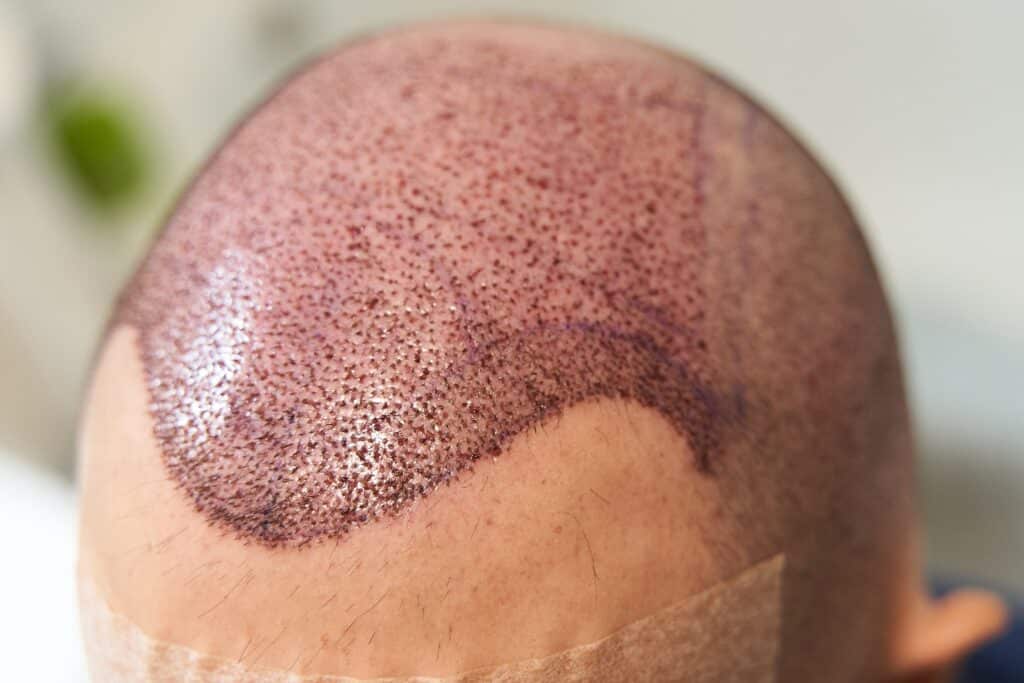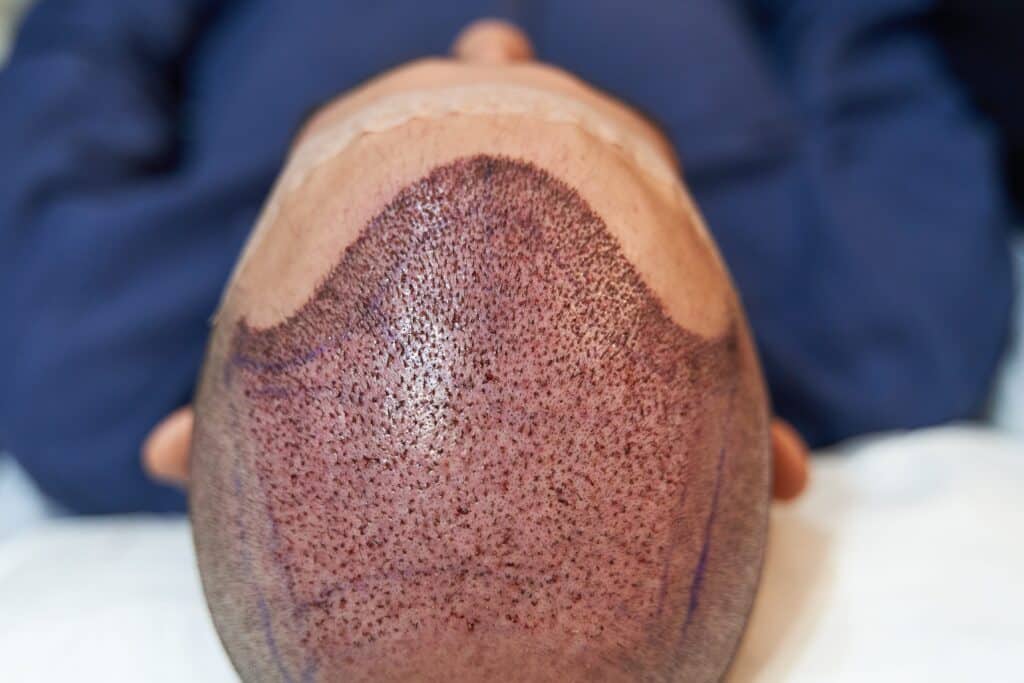Undergoing a hair transplant can be a transformative experience, but many patients find themselves concerned with the natural side effects, such as scalp inflammation and redness after a hair transplant.
This occurs as a result of the surgical planting of hair follicles and is a hallmark of the body’s healing process. Increased blood flow is necessary for delivering vital oxygen and nutrients, aiding in rapid recovery, which manifests as redness.
While typically a temporary condition, varying from one to three weeks and more apparent in those with lighter skin tones, understanding the phenomenon and knowing how to manage it is crucial.
In this guide, we delve into the causes of post-transplant redness, offer practical care tips, and provide insights on what to do if redness persists, aiming to arm you with all the information needed for a smooth post-surgery journey.
Why do I have redness after my hair transplant?

Redness after hair transplantation occurs after the operation due to planting hair follicles and the healing process. Post-surgery, the body actively channels more blood to the treated area to supply the cells with essential oxygen and nutrients, thus accelerating the healing process. It is the blood which gives the red color.
Patients with lighter colored skin experience more visible redness. But it happens to everyone and the only difference is that it is more visible in people with lighter skin. The redness usually lasts between one and three weeks.
Additionally, the surgical process entails making several tiny incisions in both the donor and recipient areas to insert the hair roots, which can result in the formation of scabs and crusts. With the washing process, the recipient area may have some redness on it. You may also see that your scabs turn white and/or swell up.
What can I do about a redness after hair transplant?

Redness after a hair transplant is a normal part of the healing process. However, you can mitigate it by following the post-care instructions given to you after your hair transplant. On top of the advices provided to you by your hair transplant surgeon, there are some additional measures you should take:
- Refrain from taking showers with overly high heat levels.
- Do not expose yourself to direct sunlight for a duration of 30 days after your surgical procedure.
- Stay away from swimming in chlorinated water and using hot tubs for a period of one month following your surgery.
- Once you’ve finished with your post-operative care, apply a cold compress or a chilled towel to the treated area.
- Avoid scratching off the scabs with your fingernails; it’s advisable to gently massage them off using the soft pads of your fingers instead.
- Ensure that you remain adequately hydrated, as it will assist in the natural healing process of your skin.
- To reduce pressure on the area where the procedure was done, it is beneficial to sleep on your back or in a position that’s slightly propped up.
Additionally, you may apply creams or lotions that your doctor recommends to treat redness following a hair transplant. Do not use any cream or lotion without permission from your specialist doctor.
How long will it take to heal?

Redness after hair transplant varies according to the body of the patient. Usually it fades after between one and three weeks.
Some patients may experience redness for slightly longer. In the most extreme cases, people with very pale or sensitive skin may have redness for up to two months.
If the redness is increasing gradually after hair transplantation, or continues after more than 2 months has passed, you should directly inform your doctor because it may be the case that your scalp has become infected.
Cosmedica after surgery care services are designed to support your recovery and the healing process. Get your free consultation with Dr. Acar today.
FAQ
Post-transplant redness occurs primarily because the body’s healing mechanisms activate, directing an increased blood supply to the treated areas to provide oxygen and nutrients, thereby promoting a swifter recovery. This increased blood flow is what gives the scalp its red appearance.
The redness experienced after a hair transplant is temporary, generally subsiding within a one to three-week period. However, this can vary depending on the patient’s skin type, with those having lighter or more sensitive skin possibly noticing redness for a longer duration.
While showering is allowed post-transplant, hot water should be avoided as it can exacerbate redness and slow the healing process. It’s recommended to use lukewarm water and follow any specific cleaning instructions provided by your surgeon.
Post-transplant, it is crucial to protect the scalp from direct sunlight for at least 30 days. Sun exposure can lead to increased redness and may potentially harm the healing follicles. Wearing a hat or using other protective measures is advisable.
Persistent redness beyond two months is uncommon and may suggest an infection or other complications. In such cases, it’s important to contact your healthcare provider promptly to ensure appropriate measures are taken to address any potential issues.




